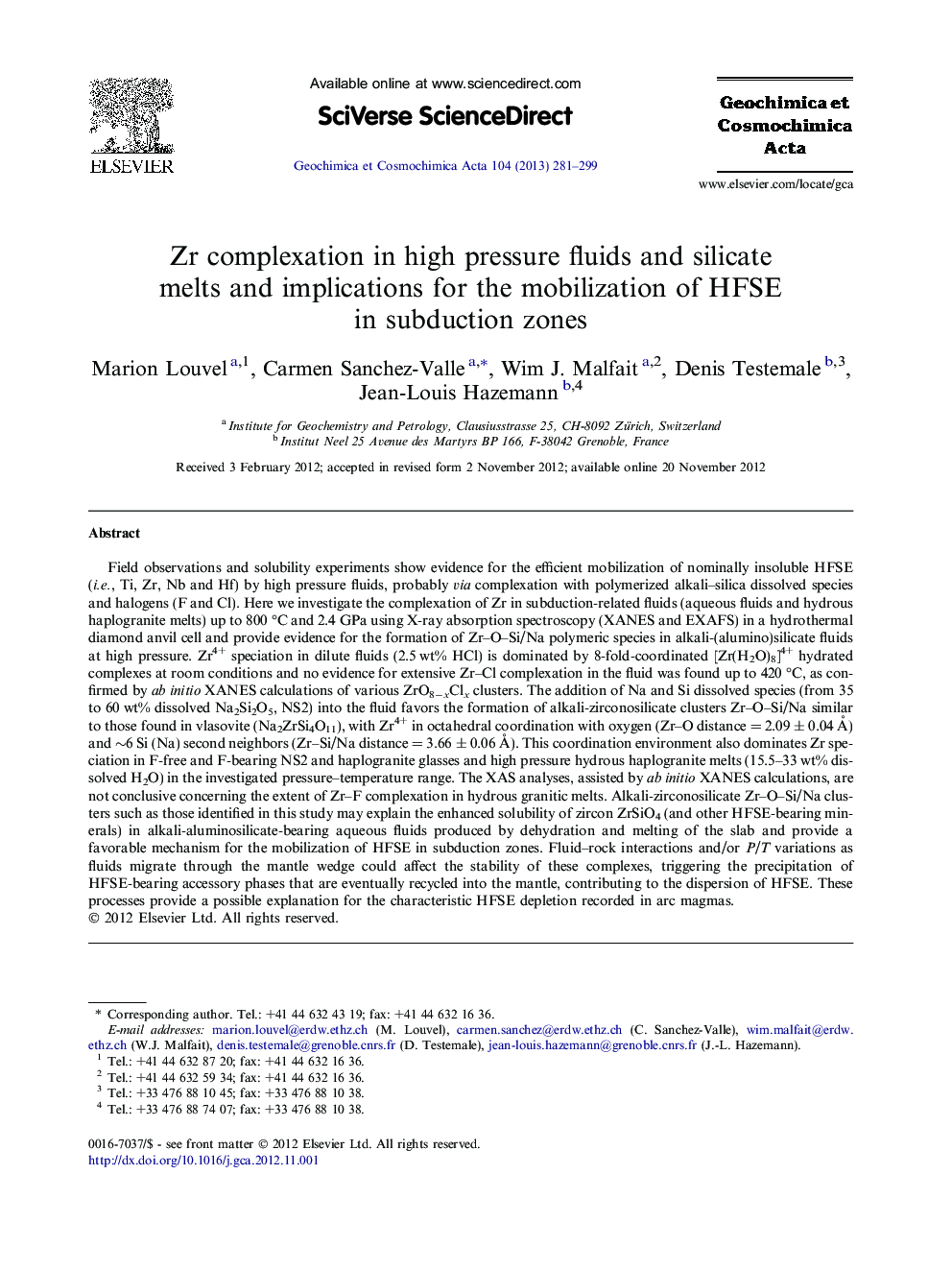| کد مقاله | کد نشریه | سال انتشار | مقاله انگلیسی | نسخه تمام متن |
|---|---|---|---|---|
| 4702603 | 1638053 | 2013 | 19 صفحه PDF | دانلود رایگان |

Field observations and solubility experiments show evidence for the efficient mobilization of nominally insoluble HFSE (i.e., Ti, Zr, Nb and Hf) by high pressure fluids, probably via complexation with polymerized alkali–silica dissolved species and halogens (F and Cl). Here we investigate the complexation of Zr in subduction-related fluids (aqueous fluids and hydrous haplogranite melts) up to 800 °C and 2.4 GPa using X-ray absorption spectroscopy (XANES and EXAFS) in a hydrothermal diamond anvil cell and provide evidence for the formation of Zr–O–Si/Na polymeric species in alkali-(alumino)silicate fluids at high pressure. Zr4+ speciation in dilute fluids (2.5 wt% HCl) is dominated by 8-fold-coordinated [Zr(H2O)8]4+ hydrated complexes at room conditions and no evidence for extensive Zr–Cl complexation in the fluid was found up to 420 °C, as confirmed by ab initio XANES calculations of various ZrO8−xClx clusters. The addition of Na and Si dissolved species (from 35 to 60 wt% dissolved Na2Si2O5, NS2) into the fluid favors the formation of alkali-zirconosilicate clusters Zr–O–Si/Na similar to those found in vlasovite (Na2ZrSi4O11), with Zr4+ in octahedral coordination with oxygen (Zr–O distance = 2.09 ± 0.04 Å) and ∼6 Si (Na) second neighbors (Zr–Si/Na distance = 3.66 ± 0.06 Å). This coordination environment also dominates Zr speciation in F-free and F-bearing NS2 and haplogranite glasses and high pressure hydrous haplogranite melts (15.5–33 wt% dissolved H2O) in the investigated pressure–temperature range. The XAS analyses, assisted by ab initio XANES calculations, are not conclusive concerning the extent of Zr–F complexation in hydrous granitic melts. Alkali-zirconosilicate Zr–O–Si/Na clusters such as those identified in this study may explain the enhanced solubility of zircon ZrSiO4 (and other HFSE-bearing minerals) in alkali-aluminosilicate-bearing aqueous fluids produced by dehydration and melting of the slab and provide a favorable mechanism for the mobilization of HFSE in subduction zones. Fluid–rock interactions and/or P/T variations as fluids migrate through the mantle wedge could affect the stability of these complexes, triggering the precipitation of HFSE-bearing accessory phases that are eventually recycled into the mantle, contributing to the dispersion of HFSE. These processes provide a possible explanation for the characteristic HFSE depletion recorded in arc magmas.
Journal: Geochimica et Cosmochimica Acta - Volume 104, 1 March 2013, Pages 281–299